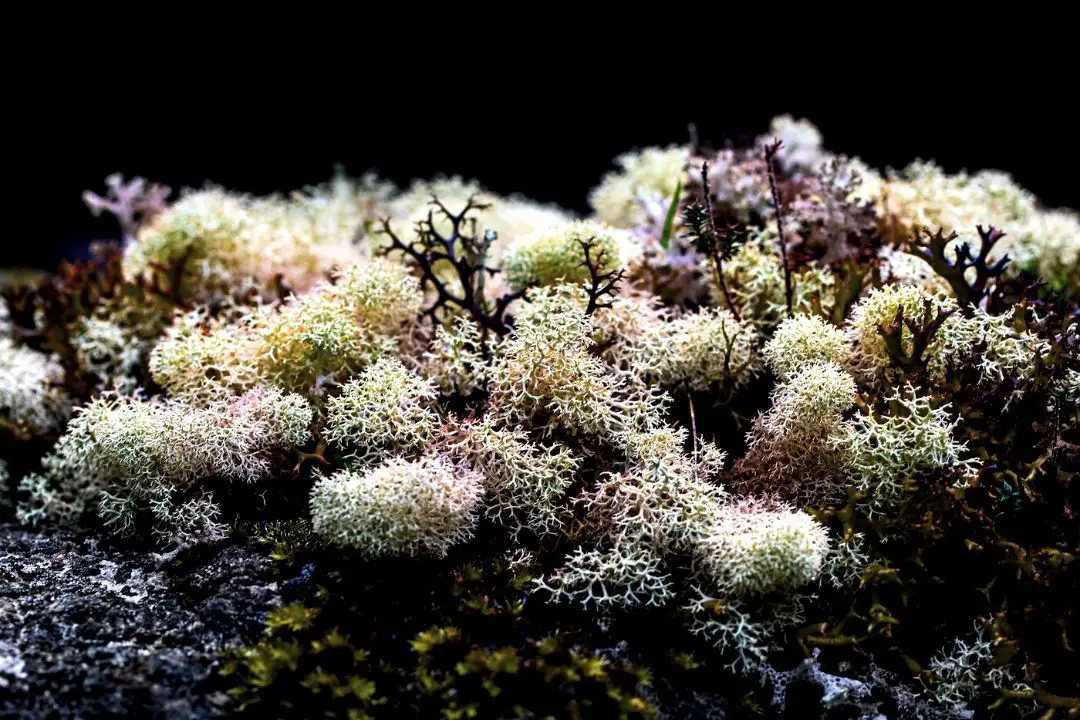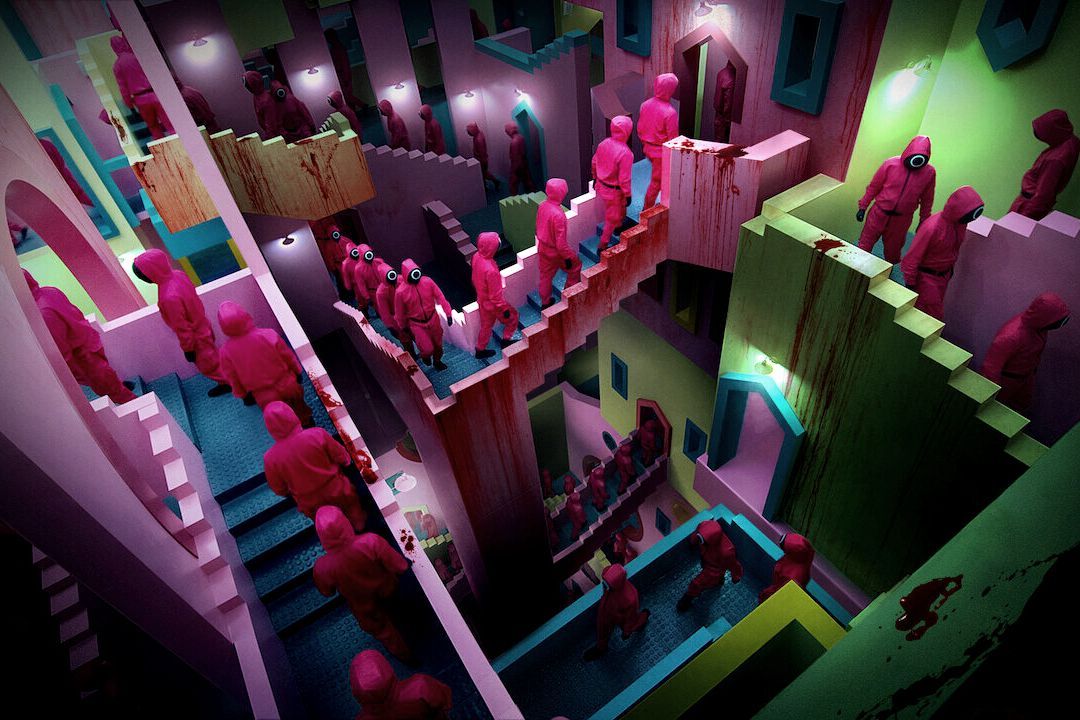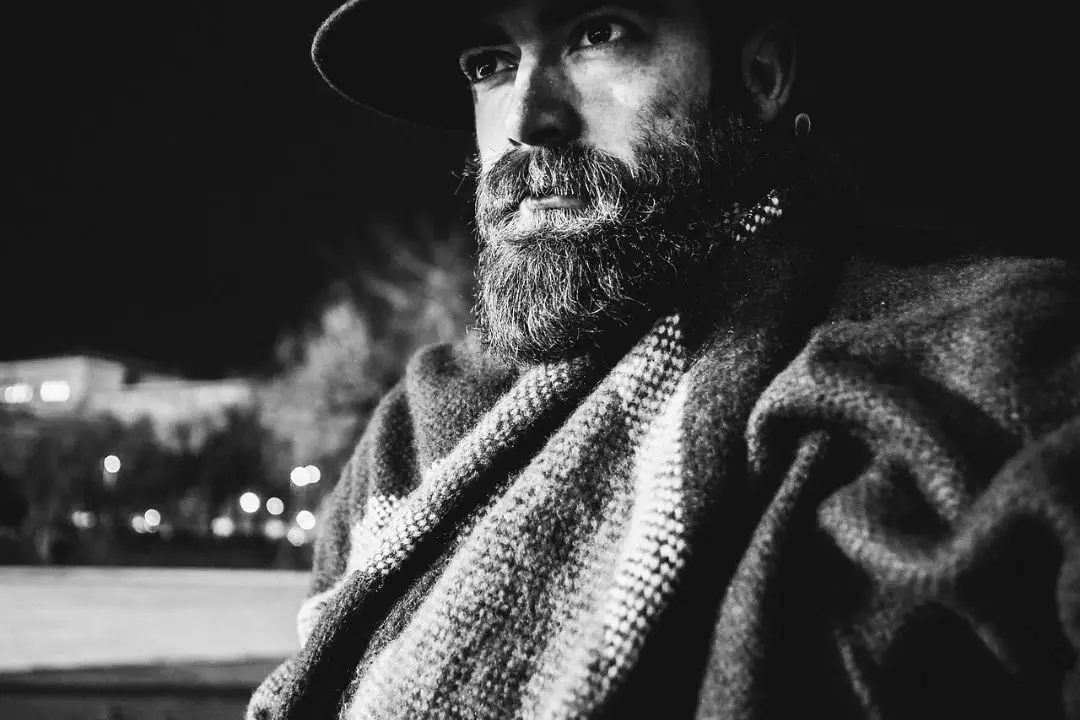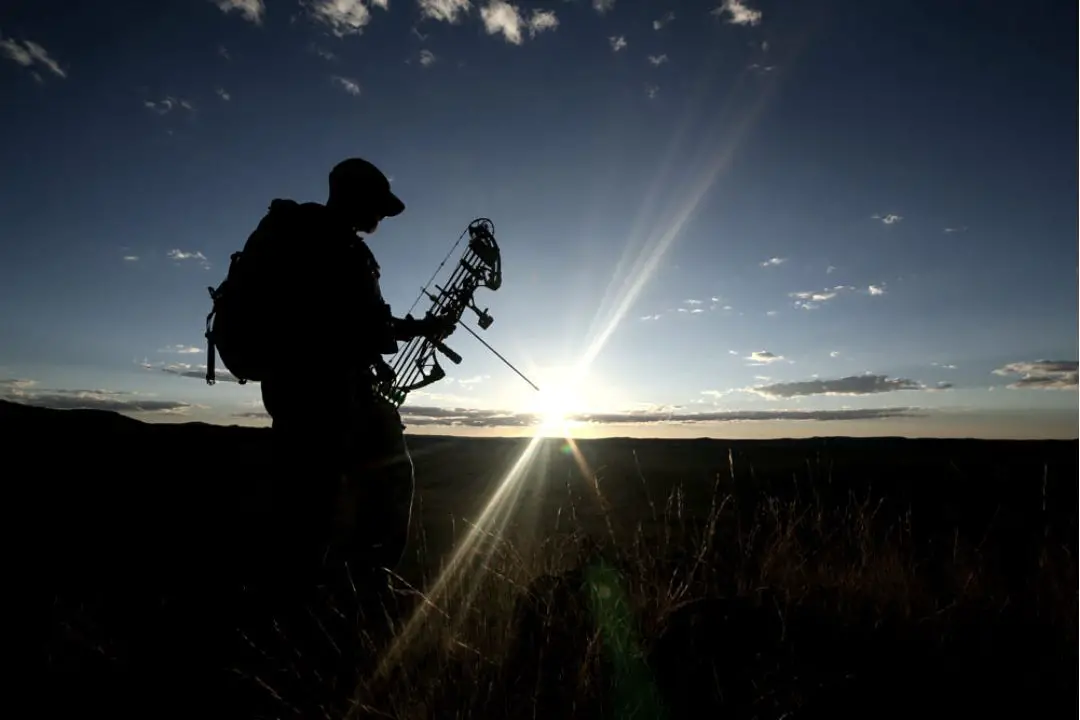A Helpful Guide on How to Start a Campfire
There's nothing like sitting around a campfire, roasting marshmallows and telling stories with your friends. But before you can enjoy all that fun, you need to know how to build a campfire. Dive in and find out in our helpful guide.
Do you love the outdoors but don't know how to start a fire?
We're here to help! In this blog post, we'll walk you through everything you need to get a fire going in no time. So whether you're camping, hiking, or just trying to stay warm during a power outage, we've got you covered.
A roaring campfire is a perfect way to relax and spend time with friends and family. You'll be able to enjoy all that a campfire has to offer in no time - from roasting marshmallows, telling stories, watching a camp night movie, or maybe just keeping you warm!
Keep reading to learn how to start a fire today! With just a few simple steps, you can have one up and running in no time - so what are you waiting for? Get started now!
What You'll Need
Before you get started, you'll need to gather some supplies. Here's what you'll need:
Tinder
This is material that will catch fire easily and help to get the larger pieces of wood burning. Good options for tinder include wood chips, dry leaves, small sticks or twigs, or even paper products like toilet paper or paper towels.
You can also use candle wax, dryer lint, or cotton balls soaked in petroleum jelly as a tinder. This will ensure that the fire will start safely and the fire ring will spread evenly irrespective of the weather.
Kindling
Once your tinder is burning, you'll need to add some smaller pieces of wood to keep the fire going. This is where kindling comes in. Kindling is usually small twigs or sticks that are no thicker than your finger.
Firewood
Once your kindling is burning well, you can add some larger pieces of wood to keep the fire going strong. Firewood should be cut into logs that are about the size of your forearm. If the logs are too big, they won't catch fire easily; if they're too small, they'll burn up too quickly.
Some other things that you will need to prepare and light your campfire will include :
A camping saw: If you need to cut your own firewood, you'll need a camping saw.
A Firestarter: You'll need some form of ignition to start a fire and keep it going if necessary. A standard lighter or box of matches will do the trick but if you want something reliable irrespective of the weather, pick a camping fire starter.
A camping shovel: A shovel can be used to move wood around, build a fire pit, and extinguish your fire when you're done.
Also keep something like a Water container, sand, and dirt handy in order to extinguish the fire.
The Steps
Now that you have all the supplies you need, let's get started!
Step One: Preparing the Site
The first step in starting a campfire is to find a safe location. You'll want to choose a spot that's at least 15 feet away from any trees, bushes, or other flammable objects. Once you've found a safe location, use your shovel to clear away any dead leaves, twigs, or other debris.
Next, use your shovel to dig a small pit in the center of your cleared area. The pit should be about a foot wide and a foot deep. Once you've dug the pit, use your shovel (or hands) to create a small mound of dirt in the center of it. This mound will be used to build your fire.
Step Two: Building the Fire
Now it's time to start building your fire. Place your tinder in the center of your cleared area, on top of the dirt mound, and create a tinder bed.
Next, add some pieces of kindling to the tinder, stacking it in a tepee-like structure. This will help the airflow through your tinder and make it easier to catch fire. You can also prepare a different structure with your kindling.
Once your kindling is in place, use your firestarter to light the tinder. Once the tinder is burning, add some of your firewood to the pit, being sure to leave room for air to circulate.
Step Three: Keeping the Fire Going
Once your fire is going, you'll need to add more wood to keep it burning. The best way to do this is to add a few pieces of firewood at a time, waiting until they're well-burned before adding more.
If you find that your fire is starting to die down, you can use a camping saw to cut some of your firewood into smaller pieces. Smaller pieces will catch fire more easily and help to keep your fire going.
Remember to add only a few pieces at a time so that the flames don't get overwhelmed and die out!
Step Four: Extinguishing the Fire
When you're ready to put out your fire, you'll need to use water, sand, and dirt. Begin by pouring water over the entire fire pit, making sure to saturate all of the wood. Next, use your shovel to cover the fire with sand or dirt. Be sure to shovel the dirt onto the fire from all sides, using enough to completely cover the wood.
Once you've covered the fire, use your foot (or shovel) to stomp on the dirt, pressing it down onto the wood. This will help to extinguish the fire more quickly.
Finally, check the fire pit to make sure that all of the embers are extinguished and that there's no heat coming from the pit. Once you're sure that the fire is out, you can leave the site.
You can also take a look at the video below to learn about teepee and log cabin structure campfire:
Different Types of Campfires
Building a campfire is an essential skill for any outdoorsman or woman. Not only do campfires provide warmth and light, but they can also be used to cook food, boil water, and signal for help. In short, a campfire can mean the difference between life and death in a survival situation.
That said, not all campfires are created equal. Depending on your needs, you may want to build a different type of fire. The classification is done based on the arrangement of the log and kindles for building the fire.
In this blog post, we'll cover the most common types of campfires. Read on to learn when you should use each type of fire.
Teepee Fire
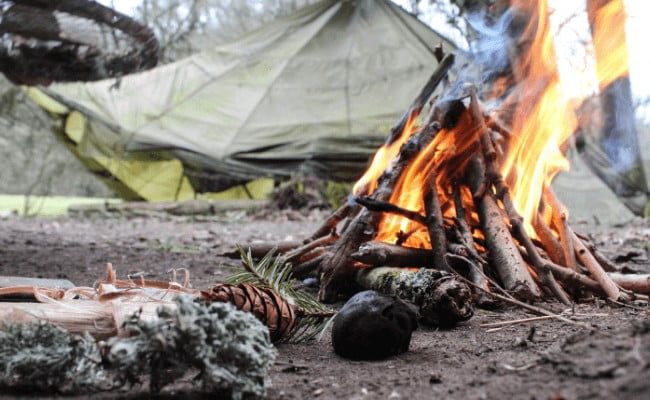
The teepee fire is perhaps the most popular type of campfire. To build one, start by placing a small pile of tinder in the center of your fire pit. Then, arrange tinder kindling in the shape of a cone. Finally, add larger pieces of wood to the outside of the cone.
The teepee fire is ideal for cooking because it can be easily regulated. By adding or removing wood from the outside of the cone, you can control how hot the fire gets. This makes it easy to maintain a consistent temperature for cooking purposes.
In order to cook on this type of fire, build it up so that the flames are high. Then, place a grate over the fire. Alternatively, you can place your pot or pan directly on the logs.
Log Cabin Fire
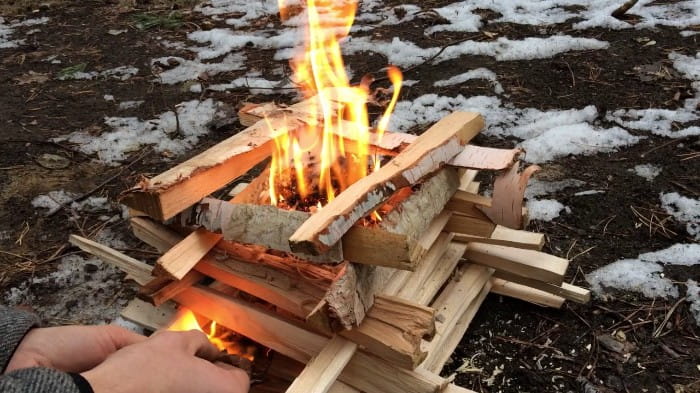
A log cabin fire is similar to a teepee fire in that it starts with a small pile of tinder in the center of the fire pit. The main difference is in how the kindling and larger pieces of wood are arranged. Rather than being arranged in a cone-shaped teepee, they are arranged in a rectangular "cabin" shape with alternating layers of kindling and wood.
To build a log cabin fire, start by placing two logs parallel to each other in your fire pit. Then, place two more logs on top of the first two logs at right angles. Continue building your log cabin by alternating layers of logs until you reach the desired height. Once your log cabin is built, light the tinder and allow the flames to spread to the rest of the wood.
The log cabin fire burns slowly and evenly, making it ideal for situations where you need a long-lasting source of heat (e.g., overnight camping). To cook on a log cabin fire, build it up so that the flames are high. You can use camping Dutch Ovens or place your pot or pan directly on the logs.
Pyramid Fire
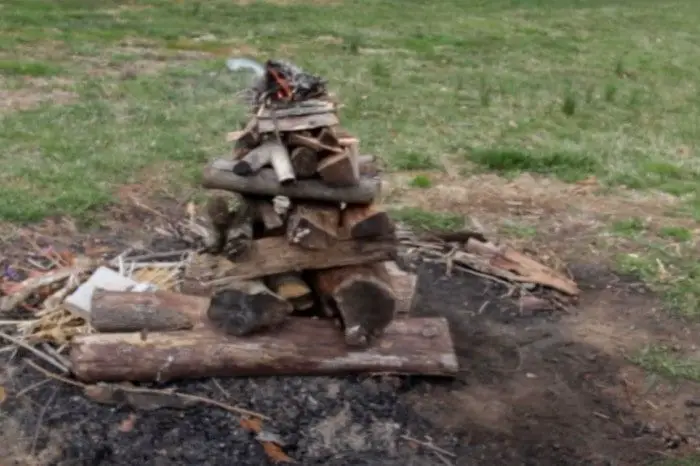
The pyramid campfire is similar to the log cabin fire in that it starts with a small pile of tinder in the center of the fire pit and has alternating layers of kindling and wood. However, rather than being arranged in a rectangle, the kindling and wood are arranged in a pyramid shape.
The pyramid fire burns hot and fast, making it ideal for situations where you need quick heat (e.g., boiling water). However, because the pyramid campfire burns so quickly, it's also easy to lose control of. So if you're looking for a slow-burning fire that will last all night, the pyramid fire is not for you.
Lean To Campfire
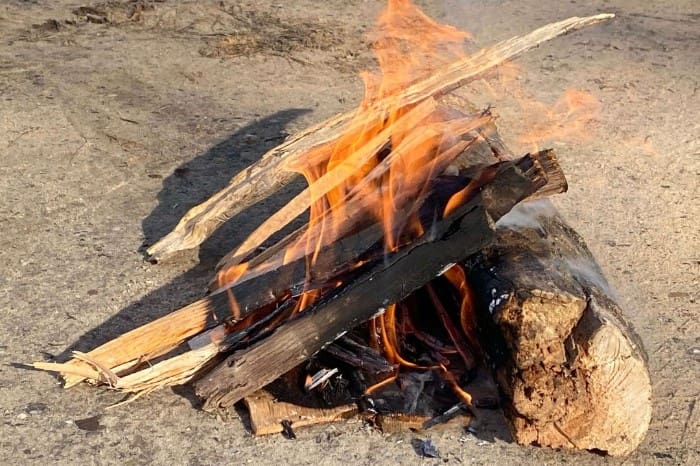
Lean-tos are especially useful in cold weather, and windy conditions as they help to block the wind and keep the heat concentrated in one area. When building a Lean-to Campfire, be sure to build it upwind of your campsite so that the smoke doesn't blow into your face. They're also perfect for when you're low on firewood or need to be extra careful with your fire.
To build a Lean-to, find a fallen tree or large log that you can lean smaller pieces of wood. If there's no log available, you can build a small wall out of rocks. Make sure your wall is tall enough that your wood will lean against it without falling over.
Then, build your fire in front of the wall using small pieces of wood. Once your fire is going, add larger pieces of wood to keep it going.
Keep in mind that Lean-tos can be more difficult to control than traditional campfires, so be sure to take extra care when building and tending to your fire.
Things to Remember
Campfires are a staple of any camping trip, but they can also be dangerous if not used properly. Apart from all the basic fire safety rules, here are a few tips to keep in mind the next time you build a campfire:
- Always build your fire in a designated fire ring or pit. If one is not available, choose a spot that is clear of grass, leaves, and other flammable materials.
- Never use accelerants, such as gasoline or lighter fluid, to start or intensify a fire. Not only is this dangerous, but it can also damage the environment.
- Keep your fire under control at all times. Don't let it get too big or too wild. Be sure to put it out completely before you leave the area.
- Never leave a fire unattended. Even if it's just for a minute, never take your eyes off the fire. If you need to step away, make sure someone else is watching it.
- Keep a water container or sand nearby in case of an emergency. This way, you can quickly extinguish the fire if it gets out of control.
- Be careful with sparklers and fireworks. These can easily start a fire if they're not used properly. Make sure to keep them away from children and always point them away from yourself and others when lighting them.
By following these simple safety tips, you can enjoy your campfire without putting yourself or the environment at risk.
Also, check out our article on the Best Drop Away Arrow Rests
Final Words on Starting a Campfire
Even though propane fire pits are becoming increasingly popular as they are much easy to use, nothing beats a good old campfire. And now that you know how easy it is to start a campfire, there's no excuse not to enjoy all that nature has to offer!
So grab some friends, and some s'mores ingredients, and head on out for a fun night under the stars! But before you head out be sure to carry the best camping fire starters that are reliable and can help you in starting a fire, no matter where you are!

Also, check out some of our other articles :
